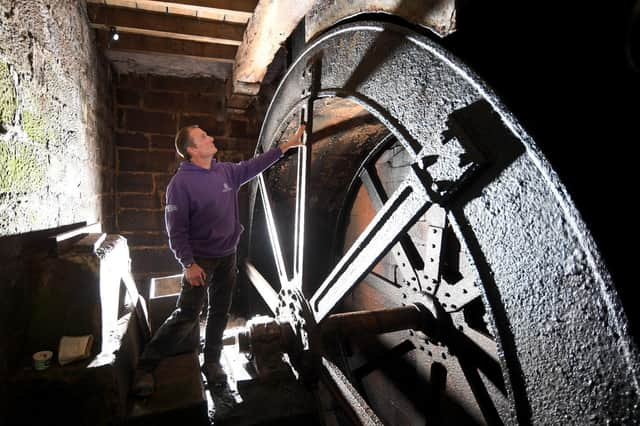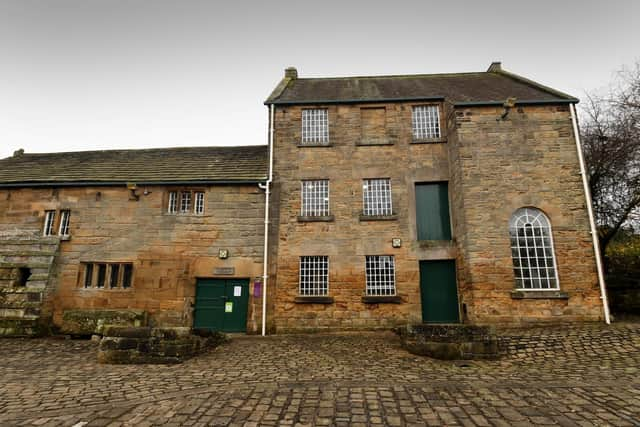Why Barnsley's Worsbrough Mill is more than a museum piece


Looking out of the window, passengers in cars and buses will see a fairly large car park opposite the nearby Red Lion pub, and they might also get a glimpse of something else, through a dense thicket of trees that becomes a lush woodland beyond.
Advertisement
Hide AdAdvertisement
Hide AdEven if you park up and go for a stroll along the lane towards the reservoir, it would be easy to miss one of Yorkshire’s fascinating buildings. What might alert you to the fact that there is something special here is the warm smell of baking.


The source of this welcoming aroma, tucked away in the little valley – as it has been for centuries – is Worsbrough Mill.
Historians have discovered that much of the present building dates from 1625, though a structure was noted to occupy the site, or close by, in the Domesday Book of 1086. Worsbrough village itself claims to date back to the seventh century, and, since the supply of water here has always been plentiful, it is highly likely that grain has been ground here from Roman times, and even before that.
Over the centuries, mills like this would have been vital to the local community. The grindstones were either driven by water, or by wind. Those next to a water source required, in many cases, a little more forethought and engineering, which involved the skilled use of flows and ponds.
Advertisement
Hide AdAdvertisement
Hide AdWhoever owned Worsbrough Mill was canny enough to adapt with the times and a “new mill”, Georgian in style, was added on to the older building in around 1840, just at the start of the Victorian era. That was steam-driven and had a beam engine which laboured on for almost a century, and in turn it was phased out in the 1920s for one powered by oil.
Today, everything has come full circle, for the mill is once again environmentally friendly, with the waters from the adjacent reservoir providing the force to turn the huge circular stones.
However, this isn’t just an ordinary mill, functioning as our ancestors designed it, for it works on many levels.
It is owned and run by Barnsley Council and still works, grinding corn that is sold on to both the public and to bread-making firms, and which also goes into the ovens of the much-loved cafe across the courtyard.
Advertisement
Hide AdAdvertisement
Hide AdSeveral types of flour are on sale at the newly redesigned gift shop – where the shelves and cupboards were made by a firm of master craftsmen at Elsecar, called Cidawood.
The mill is a tourist attraction, one of around 100 mills in the UK that are still working today. It’s a grave understatement to say the past 20 months have been a difficult time for us all, but Worsbrough Mill has used a substantial grant from the Cultural Recovery Fund to reimagine itself. And in practical sense it went into overdrive to provide corn for bakers across the country – both commercially, and at home.
At the moment, all the grain is sourced from a Ripon farm, and all of it is organic, and though it is too much to claim that this little Yorkshire mill fed the nation, it certainly played its part.
“There was a huge surge in demand,” says head miller Simon Dodd. “Our flour was the star of many a show, helping to inspire people to get baking.
Advertisement
Hide AdAdvertisement
Hide Ad“As things slowly returned to ‘normal’, and supplies from other sources resumed, we were able to cut back, but at the height of it all, we were milling about three tonnes of grain every two or three weeks. We were not alone, and there were other places who were working from sun-up to sundown, and all the hours in between.”
It helped raise the mill’s profile, too. “It certainly made a lot of people aware that we were here, and the footfall increased beyond belief,” says Simon.
Josie Eagleton, business development manager for Barnsley Museums, says: “The mill has – deservedly – stopped being ‘Barnsley’s best-kept secret’, and we are determined to keep that momentum going.”
For Simon, who trained and worked as a teacher for many years, the daily commute to the mill from Selby is a nice one. It was in Cumbria, though, that his passion for milling was first ignited. “A parent of one of the youngsters I was teaching turned to me one day and asked if I could do him a favour. He wondered if I was free to help out at the mill that he was running for his parents-in-law – just an hour or so. I thought that it sounded fun, so I agreed, and I loved it from the moment I started.
Advertisement
Hide AdAdvertisement
Hide Ad“As time went on, I did more and more at their mill and it came to a point when they decided to sell up – and I was asked if I wanted to take it on. The timing wasn’t right and I had to decline. But then, after the move to Selby, I wasn’t getting the job satisfaction that I wanted, and again quite by chance I was thumbing through a magazine and saw the Worsbrough job advertised. I thought ‘now is definitely the time’, and I applied for an interview... and here I am.”
He enjoys his job and loves the rhythm of the mill when it is working. “You learn the sounds around you and what they mean, and you can instinctively tell if all is right, or if there’s something not performing properly. It’s very much like a classroom in that respect.”
He also enjoys the variety that the job offers. “You can be completely alone one day, or working alongside my milling colleague Charlotte – she makes a wicked sourdough bread, by the way – and the next you’ll be explaining how it all works and functions to a group of visitors. Some of them just want to see and learn about the basics, others want to delve far more deeply, but everyone is aware that they are experiencing one of the oldest methods of production known to man.”
As well as being miller, guide and host to visitors, Simon is also treasurer of the Traditional Corn Millers’ Guild, the nationwide professional body of the men and women who grind the corn which makes our daily bread. And he has discovered much about the mill’s history – there are grisly stories of horrific accidents in years gone by, when there was little or no regard for health and safety.
Advertisement
Hide AdAdvertisement
Hide Ad“If these beams and stones could talk, they’d have a lot to say,” says Simon, “and it’s our job to keep our history alive and to offer a memorable experience that they’ll be able to pass on, encouraging others to drop by.”
Unfortunately, there’s one tradition that Simon won’t be able to follow. It seems that all the Worsbrough millers across the generations have carved their initials into the stone lintels of the fireplaces. But now that the mill is Grade II-listed, it has protected status, and there can be no alterations to the fabric. All grist to the mill, you might say.
For information about the mill, the shop, cafe and visitor space, call 01226 774527, or visit www.worsbrough-mill.com/